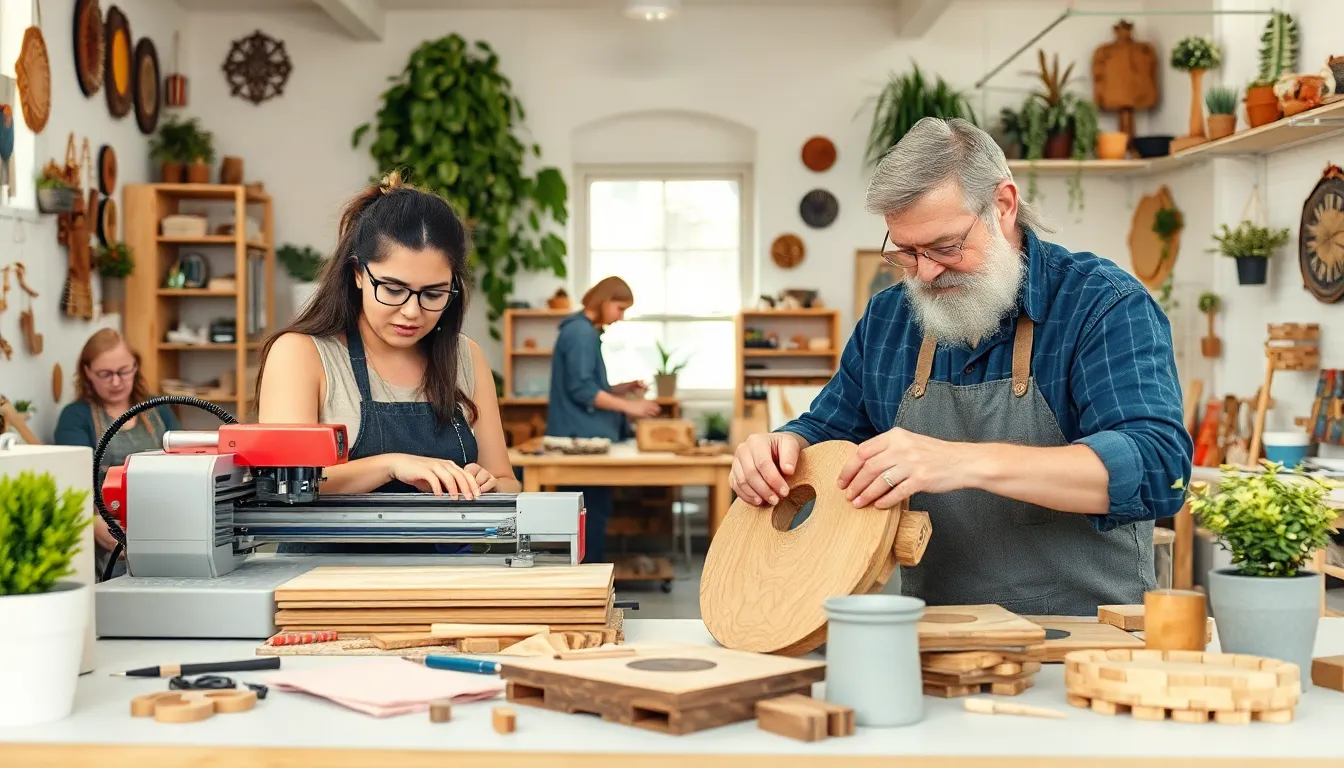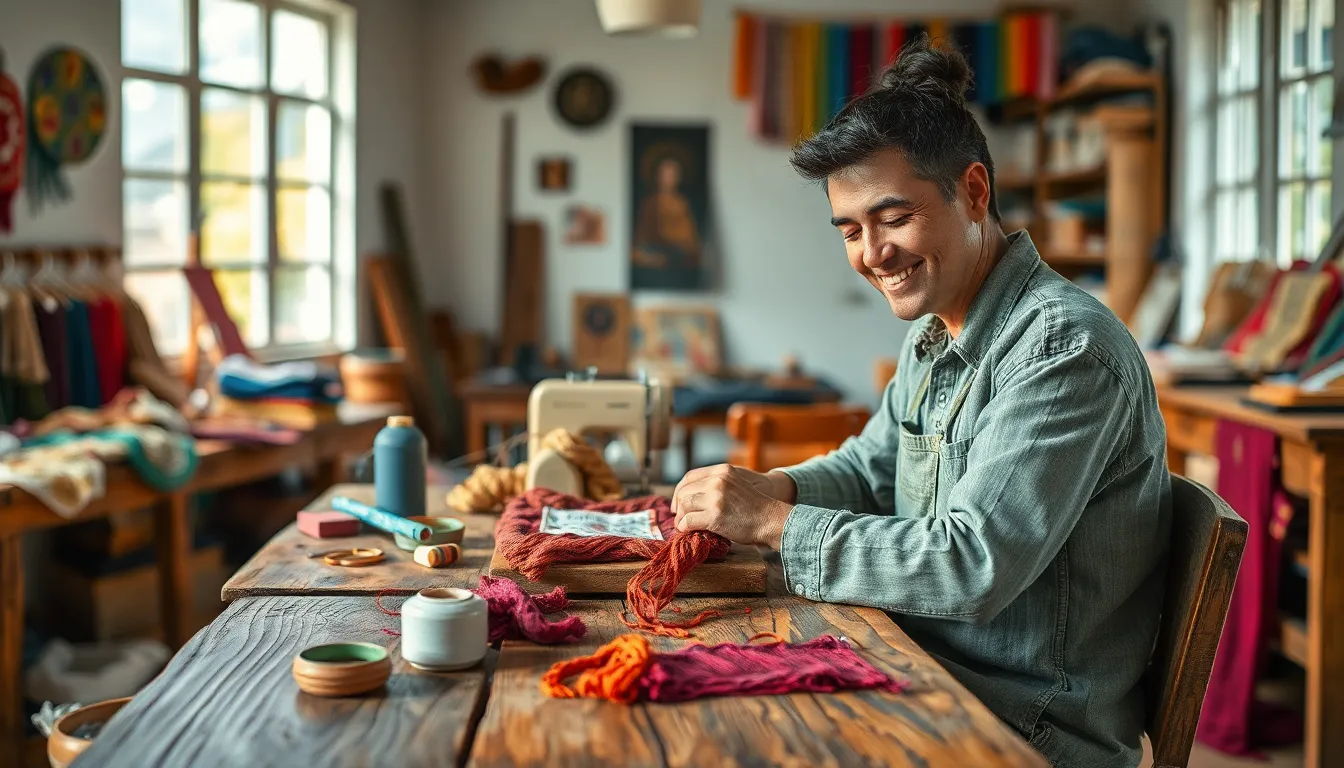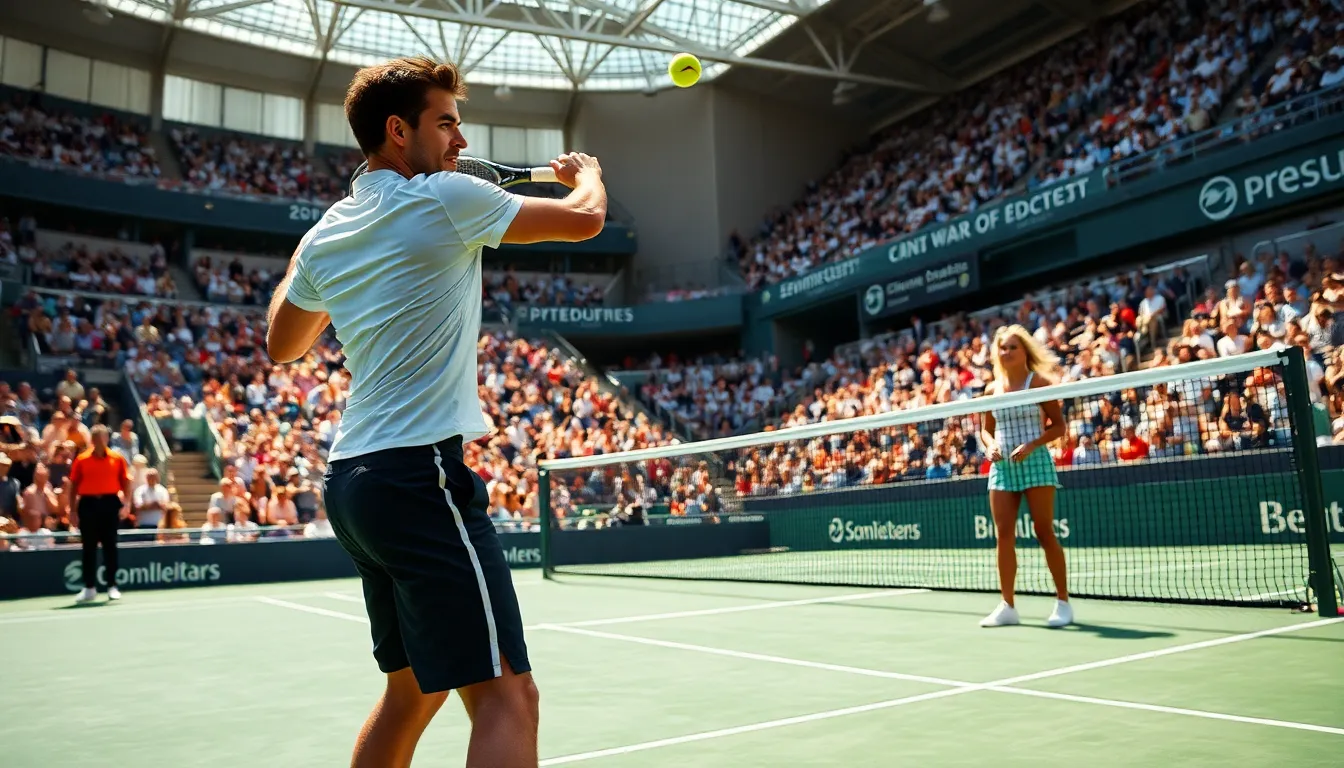In a world dominated by mass production, modern crafts are like a breath of fresh air—handmade treasures that add a personal touch to everyday life. Imagine sipping your morning coffee from a mug that’s not only functional but also a quirky conversation starter. That’s the magic of modern crafts. They blend creativity with practicality, transforming ordinary items into extraordinary works of art.
Table of Contents
ToggleOverview of Modern Crafts
Modern crafts play a vital role in today’s society by merging creativity with everyday functionality. Handmade items, including unique coffee mugs and intricately designed textiles, reflect individual artistry and thoughtfulness. Artisans focus on personal expression in their work, elevating common objects into prized possessions.
Contemporary craftsmen utilize a variety of materials, ranging from reclaimed wood to sustainable fabrics. These options often influence design choices, as artists aim for eco-friendliness without sacrificing aesthetics. Many creatives explore innovative techniques, fostering unique styles that resonate with diverse audiences.
The movement toward handmade products continues to gain momentum amid mass production. Consumers increasingly seek authenticity in their purchases, choosing to support local makers and small businesses. Trust in quality and craftsmanship drives the desire for one-of-a-kind items that tell a story.
Workshops and online platforms have emerged, providing spaces for crafters to showcase their skills. Communities encourage collaboration and sharing of techniques, fostering growth among participants. Many platforms also emphasize the importance of connecting with customers, creating a personal relationship through storytelling and background of the crafts.
Overall, modern crafts encapsulate a trend toward individuality and sustainability, offering practical solutions with style. Each handcrafted piece serves as a testament to the dedication and passion of the creator, making them not just items, but cherished treasures brimming with character.
Popular Techniques in Modern Crafts

Modern crafts incorporate various innovative techniques that reflect current trends in creativity and sustainability. Artisans embrace methods that align with consumer values.
Upcycling and Sustainability
Upcycling transforms discarded materials into unique crafts, reducing waste significantly. Creators use items like old furniture and fabric scraps to craft beautiful, functional pieces. This approach not only promotes sustainability but also highlights creativity through resourcefulness. Many artisans prioritize eco-friendly practices, sourcing materials that minimize environmental impact. The trend fosters a community of crafters dedicated to preserving resources while offering stylish alternatives to mass-produced goods. Upcycling serves as a testament to the creativity found in reimagining everyday items, combining artistry with responsible consumption.
Digital Crafting
Digital crafting introduces technology into traditional crafting methods, expanding possibilities for creators. Artists utilize design software and laser cutting tools to produce intricate designs, blending the digital and physical worlds. Many crafters share their work on online platforms, reaching wider audiences and building connections. This technique encourages collaboration among artists globally, allowing them to exchange ideas and inspire one another. Digital tools make crafting more accessible, enabling beginners to experiment with various techniques. The integration of technology into crafting embodies innovation while preserving the hands-on experience cherished by artisans.
Key Trends in Modern Crafts
Modern crafts reflect evolving tastes and values, showcasing distinctive trends that resonate within the creative community.
Minimalism and Simplicity
Minimalism defines a significant shift in modern crafts. Artisans focus on clean lines and uncomplicated designs, emphasizing function over embellishment. This approach leads to products that evoke tranquility and clarity, making them popular among consumers seeking simplicity. Crafting with limited materials encourages creativity, prompting makers to explore innovative techniques. Sustainable practices also align with minimalism, inspiring the use of eco-friendly materials. Resulting pieces often highlight the beauty found in functionality, promoting an aesthetic appreciation for craftsmanship.
Cultural Influences
Cultural influences shape the landscape of modern crafts. Artisans draw inspiration from their heritage, merging traditional techniques with contemporary designs. This blending fosters a diverse array of handcrafted items that celebrate various backgrounds. Global collaboration enhances this trend, allowing artisans to incorporate elements from different cultures into their work. Consumers increasingly value these stories, seeking products that reflect their personal identity and shared experiences. As a result, modern crafts provide a vibrant tapestry of creative expression that honors the past while embracing innovation.
Essential Tools for Modern Crafters
Modern crafters rely on specific tools to bring their creations to life. Scissors play a fundamental role in crafting, providing precision for cutting various materials. Cutting mats protect surfaces while offering a clean workspace, ensuring accurate cuts for papers, fabrics, and more. Rotary cutters work alongside mats, delivering sharp, easy cuts for quilting and sewing projects.
Adhesives come in multiple forms, each suitable for different materials. Hot glue guns provide a strong bond for quick fixes, while fabric glue delivers flexibility for textile projects. Craft knives offer accuracy, allowing crafters to create intricate designs or clean edges.
Another key tool is the sewing machine, which enhances efficiency in fabric-related crafts. Machines range from basic models to advanced options featuring embroidery capabilities. Versatile tools facilitate a range of techniques, whether it’s quilting, garment construction, or home decor projects.
For digital crafting, software programs aid in the design process. Programs like Adobe Illustrator or Canva allow artists to create intricate digital images. Tablets equipped with styluses enable drawing, making illustrations easy to develop and edit.
Storage solutions also play a crucial role in organizing crafting supplies. Bins and shelves help maintain an uncluttered workspace, enhancing overall productivity. Labels can clarify content, making it easier to locate materials when needed.
Investing in quality tools proves beneficial in the long run. Durable products withstand frequent use, ensuring reliability for varied projects. By focusing on essential tools, modern crafters maximize their creativity and streamline their crafting processes.
Notable Modern Crafters and Their Work
Modern crafters are redefining art through their innovative approaches. Craftswoman Sarah K. brings sustainability to the forefront with her upcycled textile creations. Each piece features bold colors and intricate patterns, transforming discarded materials into functional art.
Artisan Mark T. specializes in reclaimed wood furniture. His tables and chairs exude rustic charm while highlighting the natural beauty of aged wood. Customization is a hallmark of his work, allowing clients to create one-of-a-kind pieces tailored to their spaces.
Designer Lisa M. embraces digital crafting, blending technology with traditional techniques. Utilizing graphic design software, she creates stunning illustrations for fabrics and home decor. Her work connects to a global audience, showcasing how digital platforms can enhance handmade artistry.
Jeweler Emma R. crafts unique handmade pieces using ethically sourced gemstones. Her delicate designs appeal to those who seek jewelry with a personal story. Each item reflects her commitment to sustainable practices within the industry.
Clay artist Tom P. focuses on ceramics that blend form and function seamlessly. He experiments with glazing techniques, resulting in vibrant, eye-catching pieces. His functional art, such as mugs and bowls, illustrates the beauty of everyday objects.
Crafting communities thrive as these artisans inspire others. Workshops led by these skilled makers provide opportunities for novices to learn their craft. Online platforms also facilitate collaboration, enabling creators to share their work while connecting with like-minded individuals.
In this evolving landscape, notable modern crafters emphasize individuality and sustainability. Their creations not only highlight craftsmanship but also resonate deeply with consumers seeking authenticity. Each piece tells a story, creating a meaningful connection between the maker and the buyer.
Modern crafts represent a vibrant movement that champions individuality and sustainability in a world dominated by mass production. By embracing unique handmade creations artisans not only enhance everyday objects but also foster a deeper connection with consumers seeking authenticity. The blend of traditional techniques with contemporary practices invites creativity and innovation while promoting eco-friendly choices.
As more people turn to crafting for personal expression and quality, the community continues to thrive. Notable artisans lead the way inspiring others to explore their creativity and share their stories. Each crafted piece stands as a testament to the dedication and artistry behind it, making modern crafts an essential part of today’s cultural landscape.



